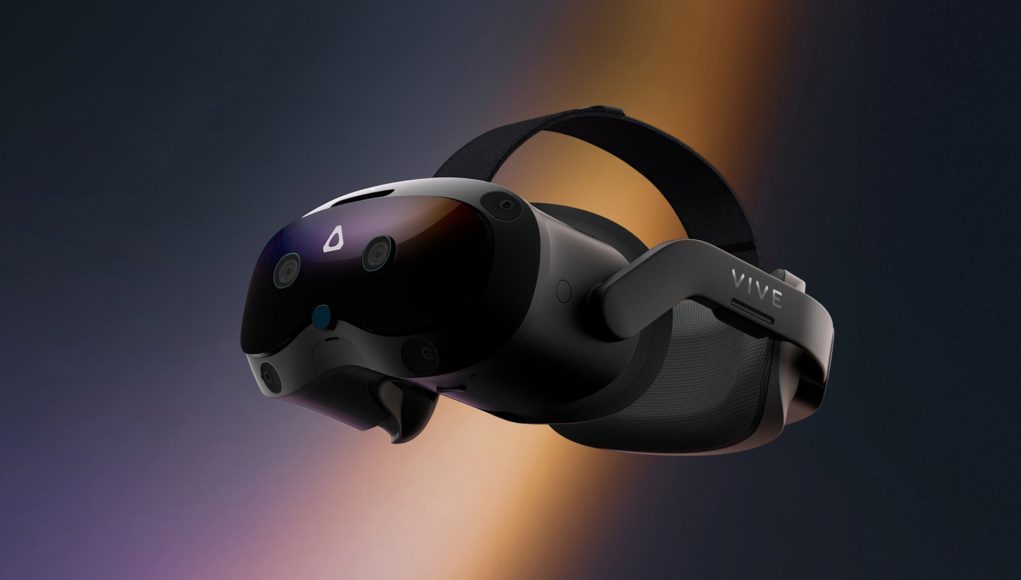HTC today revealed its next standalone XR headset, the Vive Focus Vision. The company appears to be appealing again to enterprise and prosumers, packing in a mishmash of specs from Vive Focus 3 and Vive Elite XR—priced at $1,000.
HTC launched pre-orders today for its new MR headset, Vive Focus Vision. Pre-orders are available from today through October 17th, after which the headset will presumably launch.
You may recognize many of the specs below from Vive Focus 3, which was released primarily for enterprise in 2021. It has the same controllers, same Fresnel optics and dual 2,448 x 2,448 resolution LCDs, and works with Vive Focus 3 accessories too, like the optional Vive Focus 3 facial tracking module ($100).
Unlike Focus 3, Vive Focus Vision however boasts color passthrough for mixed reality thanks to dual color cameras and depth sensor, bringing it much closer in function to the company’s Quest Pro competitor Vive XR Elite, which was released in 2023 for $1,100 (now $900).
Additionally, it comes with four front-facing tracking cameras and infrared floodlight for illuminated hand tracking.
Packing in Vive XR Elite’s Snapdragon XR2 Gen 1 chipset, Vive Focus Vision comes with built-in eye-tracking—later added an optional module on XR Elite which also tracks the user’s mouth. Hence ‘Vision’ (no relation to Vision Pro). Automatic IPD adjustment for users between 57–72mm ought to appeal to VR arcades and other enterprise use cases where multiple people use the same headset.
The company calls it a “hybrid device,” owing to its ability to play PC VR games via Steam and Viveport. To boot, pre-orders come along with a newly unveiled Vive Wired Streaming Kit for free ($150 MRSP), which includes a 5-meter streaming cable and converter, both with DisplayPort compatibility, offering what HTC says is lossless visuals from PC to the headset itself.
Ostensibly appealing to gamers, pre-orders are also set to come with seven games: Metro Awakening VR (coming to Viveport in late 2024), Arizona Sunshine 2, Bootstrap Island, Breachers, The Pirate Queen, Taskmaster VR, Kayak VR: Mirage, Wanderer, and MR-compatible games Puzzling Places, Magic Keys, Toy Trains, Yuki, and Figmin XR.
Check out the spec sheet below:
| Vive Focus Vision Specs | |
| Resolution | 2,448 x 2,448 (6.0MP) per-eye, LCD (2x) |
| Refresh Rate | 90Hz (120Hz via DisplayPort alt mode coming late 2024) |
| Lenses | Dual-element Fresnel |
| Field-of-view | 120° horizontal |
| Optical Adjustments | Automatic IPD |
| IPD Adjustment Range | 57–72mm |
| Processor | Snapdragon XR2 Gen 1 (same as Vive Elite XR) |
| RAM | 12GB |
| Storage | 128GB (expandable via MicroSD to 2TB) |
| Connectors | 2 USB-C (1 with DisplayPort Alt mode) |
| Battery Life | 2 hours (hot swappable with 20-minute internal battery) |
| Tracking | 4 front-facing tracking cameras and infrared floodlight for illuminated hand tracking |
| Controllers | Vive Focus 3 controllers, rechargeable battery |
| Audio | In-headstrap speakers (dual driver), 3.5mm aux output |
| Microphone | Dual microphone |
| Pass-through Cameras | 2 RGB Cameras (16MP) w/ Depth Sensor |
This story is breaking. We’re filling in details as they arrive, so check back soon.







